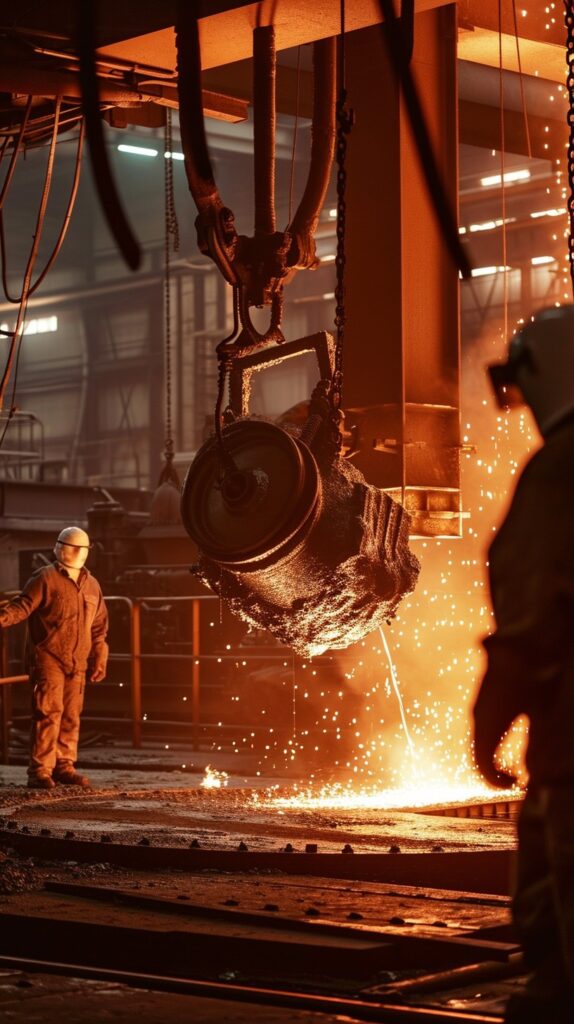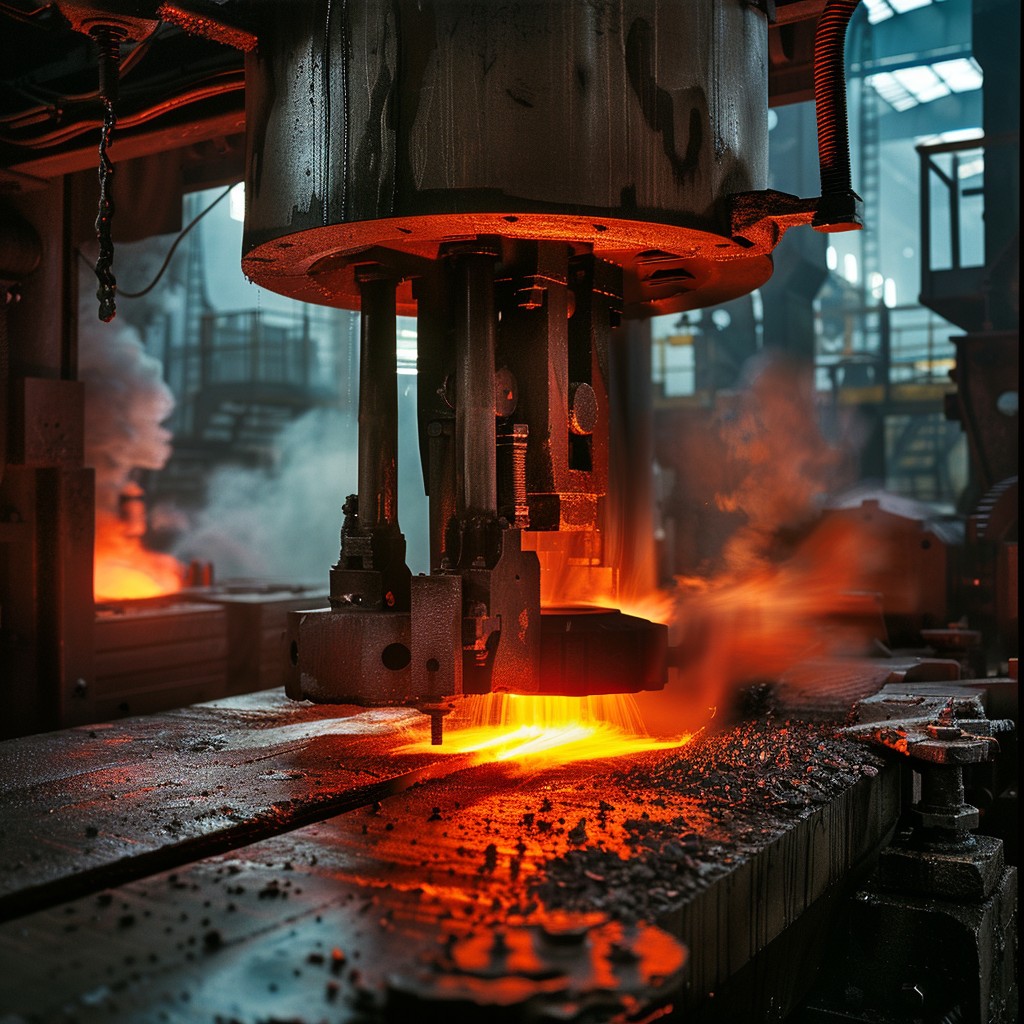

In the world of manufacturing, forging and casting are two widely used processes for shaping metal into durable, functional components. While both techniques involve the transformation of raw materials into finished products, they are fundamentally different in terms of process, material strength, and application. Understanding the differences between forging and casting can help businesses decide which method is best suited for their needs.
At Stelco, we specialize in providing forging services that deliver superior strength and durability. However, we also recognize the benefits of casting for certain applications. In this blog, we’ll explore the key differences between forging and casting, highlighting their advantages and best-use cases.
What is Forging?
Forging is a process that involves shaping metal using compressive forces. The metal is heated and then hammered, pressed, or rolled into the desired shape. Forging aligns the grain structure of the metal, which enhances its strength, making it more resistant to wear and fatigue. There are several types of forging, including open-die forging, closed-die forging, and cold forging.
Key Benefits of Forging:
- Increased Strength: Forging improves the metal’s structural integrity by aligning the grain flow, making it stronger and more durable.
- Superior Toughness: Forged components are less likely to break or crack under stress, making them ideal for high-stress environments.
- Consistency: Forging produces consistent, high-quality parts with fewer defects, thanks to the controlled shaping process.
- Cost-Effective for Large Production Runs: Although the initial setup cost can be high, forging becomes cost-effective for mass production of parts due to its efficiency.
Common Applications of Forging:
- Automotive Components (gears, crankshafts, axles)
- Heavy Machinery (shafts, industrial tools, hydraulic components)
- Aerospace and Defense (landing gear, engine parts, military hardware)
- Marine (propeller shafts, rudders)
What is Casting?
Casting is a manufacturing process where molten metal is poured into a mold and allowed to solidify into the desired shape. The mold can be made of sand, metal, or ceramic, depending on the complexity and size of the part being produced. Casting is especially useful for creating complex shapes that would be difficult or impossible to achieve through forging or other manufacturing methods.
Key Benefits of Casting:
- Complex Shapes: Casting can produce intricate, complex geometries, making it ideal for parts that require detailed designs.
- Material Flexibility: A wide variety of metals can be used in casting, including steel, aluminum, and bronze, allowing for more versatility in material selection.
- Large Size Capabilities: Casting is particularly effective for manufacturing large parts that would be challenging or cost-prohibitive to forge.
- Lower Initial Setup Costs: Compared to forging, casting typically has lower upfront costs, making it more suitable for small production runs or prototypes.
Common Applications of Casting:
- Automotive (engine blocks, housings, manifolds)
- Construction Equipment (valves, pump casings)
- Art and Sculptures (complex shapes and designs)
- Industrial Equipment (machine bases, impellers)
Forging vs. Casting: A Side-by-Side Comparison
| Aspect | Forging | Casting |
| Process | Shaping metal through compressive forces | Pouring molten metal into a mold |
| Strength | Superior due to grain alignment | Lower strength compared to forging |
| Material Properties | More durable, tough, and resistant to fatigue | Can result in porosity and lower toughness |
| Precision | High consistency and fewer defects | Allows for more complex shapes |
| Cost | Higher initial cost, but cost-effective for large runs | Lower upfront cost, better for small production runs |
| Applications | High-stress environments requiring durability | Complex shapes or large parts needing intricate detail |
When to Choose Forging
Forging is typically the better option when strength, durability, and consistency are critical. Components that will face high stress, heavy loads, or repeated use are better forged because of the improved toughness and structural integrity. Industries such as aerospace, automotive, defense, and construction often prefer forged parts for these reasons.
Ideal Situations for Forging:
- When parts need to withstand extreme conditions (high temperatures, pressure, and loads)
- When fatigue resistance is important
- When mass production is required and cost-efficiency is a priority
When to Choose Casting
Casting, on the other hand, is more suitable for parts that require complex shapes and intricate details. It is also the preferred method for producing large components that would be difficult or expensive to forge. Casting is widely used in automotive, construction, and artistic applications, where precision and complexity are required over strength.
Ideal Situations for Casting:
- When parts require complex geometries or intricate designs
- When manufacturing large components
- When small production runs are needed, and lower upfront costs are beneficial
Why Stelco Recommends Forging
At Stelco, we focus on providing the highest-quality forged components for industries where strength and reliability are paramount. Our forging process ensures that every component we produce meets the strictest quality standards, offering superior performance and durability in the toughest environments.
Forging provides unmatched toughness, making it ideal for industries like automotive, defense, aerospace, and heavy machinery. Our expertise in open-die and closed-die forging allows us to produce parts that meet precise specifications and are built to last.
Conclusion: Forging or Casting?
Ultimately, the decision between forging and casting depends on the specific needs of your project. If strength, durability, and reliability are your primary concerns, forging is the way to go. However, if your project requires complex shapes or lower upfront costs, casting may be the better option.
At Stelco, we’re here to help you make the right choice. Contact us today to learn more about our forging services and how we can provide you with the best components for your needs.